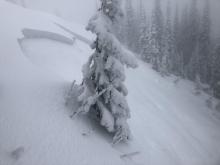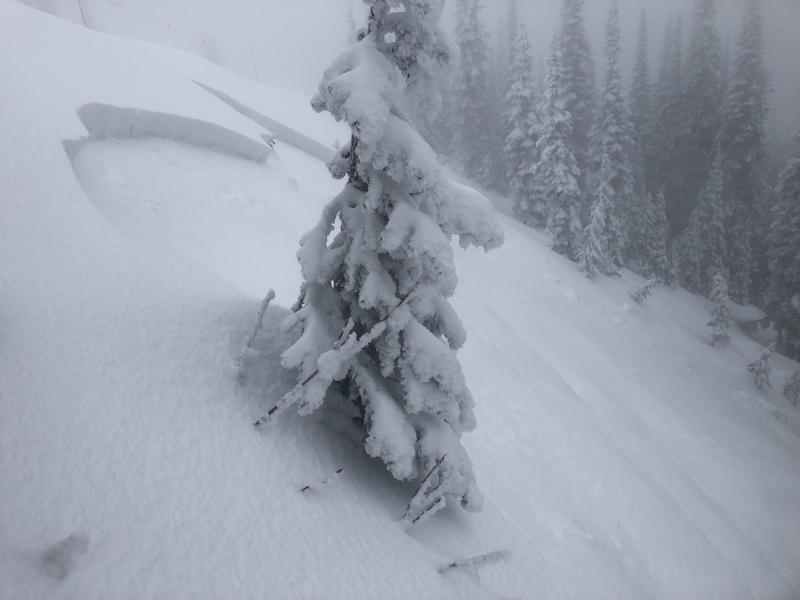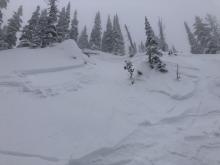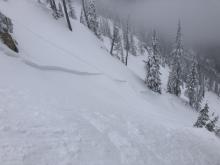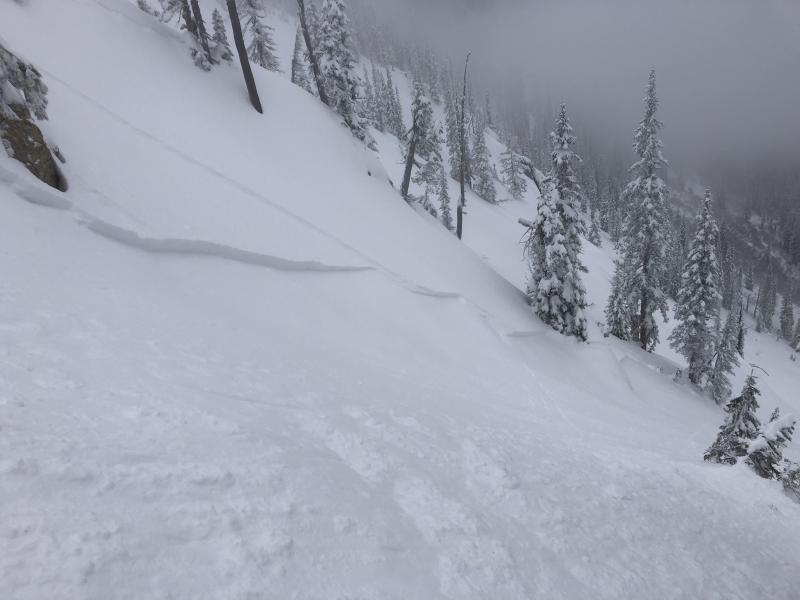| Thursday | Thursday Night | Friday | |
|---|---|---|---|
| Cloud Cover: | Mostly Cloudy | Mostly Cloudy | Mostly Cloudy |
| Temperatures: | 26 to 31 deg. F. | 19 to 21 deg. F. | 25 to 29 deg. F. |
| Wind Direction: | Southwest | West | Southwest |
| Wind Speed: | 20G36 | 14G30 | 16G36 |
| Snowfall: | 3" to 6" in. | 0" to 5" in. | 1" to 4" in. |
| Snow Line: | 3500' | 2500' | 2500' |
Whitefish Range
Swan Range
Flathead Range and Glacier National Park
How to read the forecast
You’re likely to trigger avalanches a foot deep or more on steep terrain at middle and upper elevations today. Storm slabs will be larger and more dangerous in leeward terrain below ridges and in chutes. Slabs may break across whole slopes where the new snow has buried reactive weak layers. Watch for shooting cracks and feel for collapsing in the snow around you. Stick to terrain with low slope angles with minimal overhead exposure. Avoid areas with terrain traps below.

3. Considerable
?
Above 6500 ft.
3. Considerable
?
5000-6500 ft.
2. Moderate
?
3500-5000 ft.
- 1. Low
- 2. Moderate
- 3. Considerable
- 4. High
- 5. Extreme
-
Type ?
-
Aspect/Elevation ?

-
Likelihood ?CertainVery LikelyLikelyPossible
 Unlikely
Unlikely -
Size ?HistoricVery LargeLargeSmall

We have dropped wind slabs today, and grouped the hazards together as a storm slab problem. The main factor driving instability is continued loading by new snow. Slabs will still be larger and deeper below cornices and down-wind of saddles and trees. However, slabs in sheltered areas will be more sensitive and more widespread, especially where they sit atop weak layers of surface hoar and facets. Shooting cracks and whumphs should trigger alarm bells in your head. In fact, they should only confirm your conservative terrain choices. Sticking to lower-angled slopes with limited exposure to wind loaded terrain is the way to stay out of trouble.
The avalanche danger is rising across the region as more snow and wind continue to load crusts and weak layers in the upper snowpack. Thus far, the Whitefish Range has gotten around 6 inches of new snow, and up to an inch of new water. The Flathead Range is weighing in with at least 9 inches of new snow and an inch of water. The Noisy Basin SNOTEL is reporting 8 inches of storm snow and 0.7” of snow water equivalent. Southwest winds have waxed and waned, though they have been enough to drift snow into larger, denser slabs on leeward apsects. An additional 2 to 6 inches are expected to fall today. Conditions will keep trending toward higher danger through the weekend, at least, as more poweful storms roll our way.
Yesterday, Cam could easily trigger 6 to 8 inch slabs of drifted now in the Skyland area. He also experienced several collapses and shooting cracks. In Canyon Creek, a skier cut a storm slab after her partner got shooting cracks on the same slope. The culprit in these avalanches is a sneaky layer of surface hoar. It developed in the Whitefish Range and near the southern tip of our forecast area. It was buried by the recent storm snow. The surface hoar seems to have survived at elevations above the freezing rain event that occurred on the 14th. Observers have found an ice crust from that event across the Swan Range, below about 6,500 feet in the southern Flathead Range, and in parts of the Whitefish Range. I know that in other parts of the Flathead Range, there was a layer of weak facets near the surface before the storm.
So, we’re dealing with avalanches failing where the new snow meets the old. The difference is whether the old snow is the rain crust, or whether it’s a weak layer. Where there is no rain crust, where the old, underlying snow is surface hoar or facets, avalanches will break wider and may be triggered remotely. Regardless, avalanches upwards of a foot deep will be sensitive to the weight of a rider or snow machine on slopes steeper than about 30 degrees today. The slabs you can trigger will be deeper and larger where the wind had thickened them below corniced ridges and in gullies. There is the potential for a large avalanche to step down to deeper crust and faceted layers and entrain more snow. Be conservative and limit yourself to low angled terrain. Minimize your exposure to large, wind-loaded terrain above.
More snow and wind continue today. Most of the region will experience a short break Friday before a quick-hitting storm piles up even more snow into Saturday morning. The exception will the the Swan Range, which could see continuous snow. A strong atmospheric river is forecast to bring high winds and large amounts of precipitation to the northern Rockies this weekend. Expect the avalanche danger to rise as conditions deteriorate.
This forecast applies only to backcountry areas outside established ski area boundaries. The forecast describes general avalanche conditions and local variations always occur. This forecast expires at midnight on the posted day unless otherwise noted. The information in this forecast is provided by the USDA Forest Service who is solely responsible for its content.



